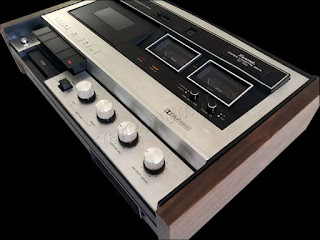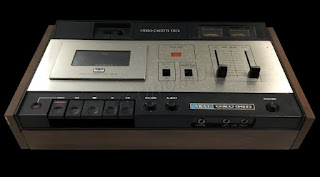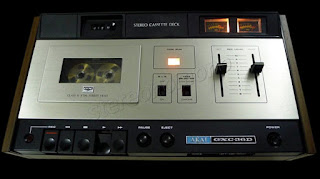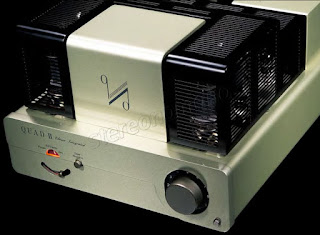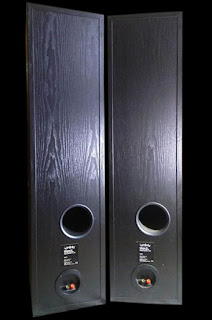Reference Series The Next Generation
In an era when pride in quality craftsmanship, independent creative thinking and conscientious attention to detail seem to be rapidly vanishing from almost every field of consumer goods, Infinity continues to lavish our unique blend of tender loving care and cutting edge engineering on every loudspeaker that bears the Infinity logo.
Most recently, we turned our attention to the popular Reference Series with an eye toward further elevating the already exceptional level of performance of this fine range of loudspeakers.
The result is Reference Series II - The Next Generation, quite simply one of the finest loudspeaker lines ever introduced. The second generation Reference Series loudspeakers represent substantial improvements in key areas such as efficiency, power handling and in both the quantity and quality of deep bass. One of the major contributing factors to this giant step forward is the introduction of drivers which incorporate proprietary APG lightweight cone technology, allowing them to respond to musical waveforms with amazing accuracy.
With higher efficiency, increased power handling and enhanced low frequency output, the new Reference Series is ready to take on any sonic challenge, from chamber melodies to operatic climaxes, from cheerful Aladdin to fearful Jurassic Park.
The Second Generation Reference Series incorporates:
Space-age APG driver technology with carbon and Kevlar fibers.
Super-light cones for improved sensitivity.
Low insertion loss crossovers for improved transient response.
Increased internal volume for extended deep bass response.
Rear-mounted port for undistorted bass response.
Crossover optimized for uniform phase response both on and off axis.
Internal bracing for reduced resonance.
Strategically placed internal damping to eliminate standing waves.
Sloped cabinet for reduced diffraction.
Redesigned grille for optimum vertical and horizontal dispersion.
Spikes for decoupling of floor-standing models.
Finest furniture craftsmanship. Sleeker, slimmer enclosure design.
APG cone technology
Without a doubt the most revolutionary innovation in the Reference Series is the implementation of a specially formulated graphite coated APG (acrylic polymer graphite) cone which combines the excellent internal damping of acrylic polymer with the stiffness of graphite. Extensive subjective and objective testing confirms that APG represents a major breakthrough in cone materials technology with stunning performance in terms of low distortion, linear frequency response, spacious sound and overall musicality.
The exclusive APG process aligns carbon and Kevlar fibers precisely along the polymer matrix, allowing total control over the contour and weight of the cone, while making it possible to create a lightweight cone with varying thickness, for greater dispersion of sound. Carbon and Kevlar fibers are embedded in an APG matrix in carefully controlled proportions. Following oven heating, the compound forms an extremely rigid, ultra-lightweight and super-strong composite cone material with maximum internal damping which offers a significant reduction in distortion caused by colorations, vibration and break-up modes. The sonic benefits of the fast transient response and high sensitivity of the new lightweight driver cones are readily apparent in the astonishing openness, lucidity and harmonic fidelity of the Reference Series loudspeakers. Their crisp, detailed sound is the result of innovative materials and driver technology unrivalled in contemporary loudspeaker engineering.
High sensitivity
Since APG cones are 30% lighter than paper cones of equal stiffness, Infinity engineers could design the new Reference Series with higher efficiency, without employing heavier, more costly magnetic structures.
The high sensitivity of the Reference Series loudspeakers, with highly efficient magnetic systems, super-light cones and low insertion loss crossovers, means far less work for your amplifier. Since amplifier distortion increases with higher power output, reducing power demands also yields a significant reduction in distortion.
Since lightweight cones respond more rapidly and linearly to transients, the rigid, high-tech cone materials employed in the high efficiency Reference Series dynamic drivers offer enhanced transparency, improved resolution of low level detail and of the ambience cues which create a wide and deep soundstage. An increase of 3dB in sensitivity reduces by 50% the power required from your amplifier to achieve the same sound pressure level.
Sophisticated crossover
The new Infinity Reference Series' low insertion loss crossover networks employ select-grade components in o crossover configuration designed to preserve signal integrity and efficiency.
Crossover design assisted by state of the art. computer technology and controlled by extensive listening tests ensures optimum linearity combined with lowest distortion and the finest sonic quality.
The high efficiency of the crossovers permits the use of Reference Series speakers in high power applications, including demanding home theater systems.
Enclosure design
In the new Reference Series loudspeakers radical steps have been taken to eliminate the "boxiness" normally associated with conventional cabinet construction.
The midrange drivers are installed in separate air-tight compartments filled with special damping material to provide smooth, linear reproduction of the crucial midband.
Internal bracing and damping reduce the deleterious effects of resonances and standing waves. Front baffle diffraction phenomena, which typically introduce smearing in the time domain, are reduced through the implementation of an optimized grille shape and through tapering of cabinet top and sides. Rear-mounted bass reflex ports minimize noise, while providing extended, punchy bass.
The Reference Series speakers in Chatsworth Oak or Black Ash vinyl are finished to the highest standards of furniture craftsmanship and their sleek contemporary "Tower" look will match most interiors.
Reference 61 i
The top of the line Reference tower includes spikes for effective decoupling from the floor and gold-plated terminals for long-term purity of signal transmission. The Reference 61 i adds a second 210 mm APG woofer to the driver complement found in the Reference 51 i, further extending low frequency response and power handling with two woofer voice coils to share the workload.
The 25 mm APG-coated dome tweeter minimizes break-up of the radiating surface across its operating range for smoother, more natural high frequency response with very low distortion. The mechanically isolated 25 mm unit reproduces the midrange with outstanding clarity and definition.
The Reference 61 i brings music to life with a new fullness and richness.
Note: Include spiked feet.
Specifications:
Model: Reference 61i
Frequency Response: 35 Hz - 25,000 Hz, (±3 dB)
Crossover: 350 Hz / 3 kHz
Sensitivity (2,83 V / 1m): 92 dB
Nominall Impedance: 6 Ω
Power Handling: 35 - 200 watts
DRIVERS:
High Frequency: Tweeter 25 mm
Mid Frequency: Midrange 130 mm
Low Frequency: Woofer 2 x 210 mm
Vinyl Cabinet Finish: Chatsworth Oak/ Black Ash
Dimensions (HxWxD): 1070 x 274 x 310 mm














